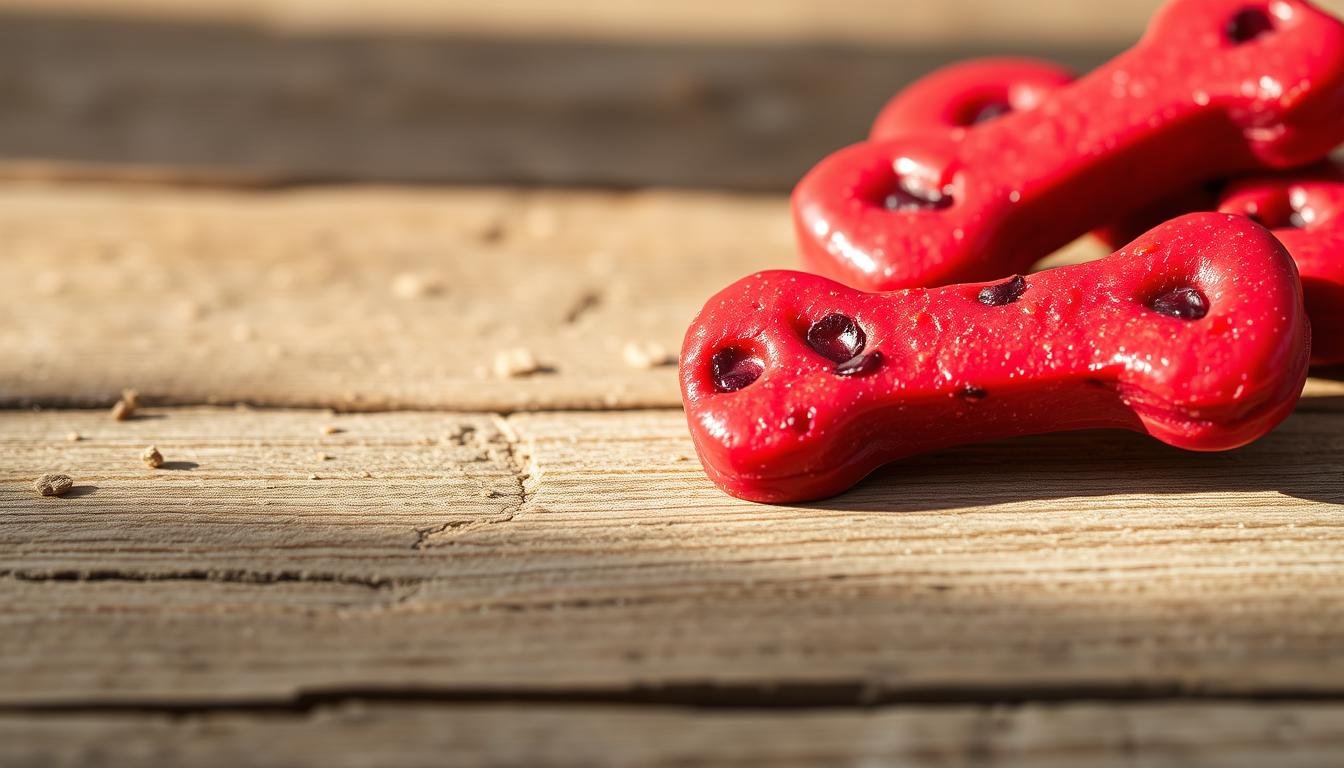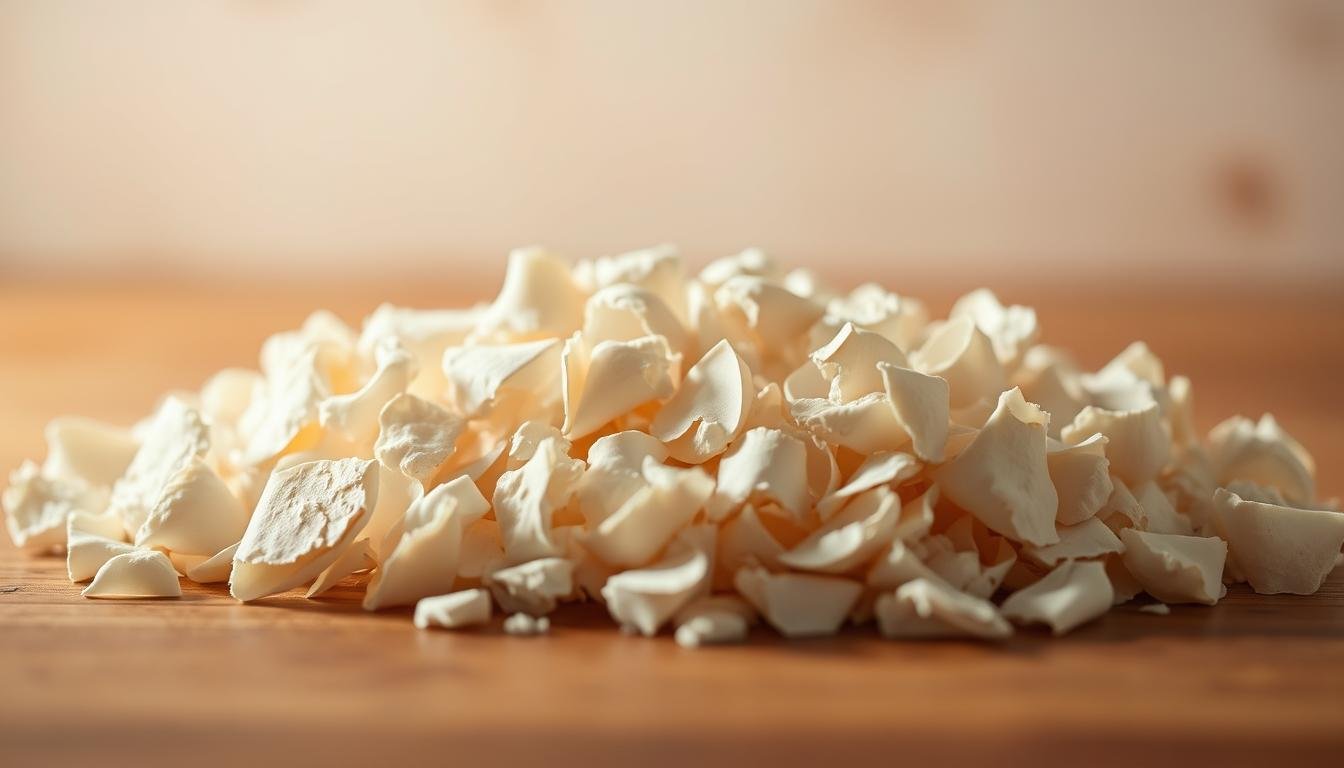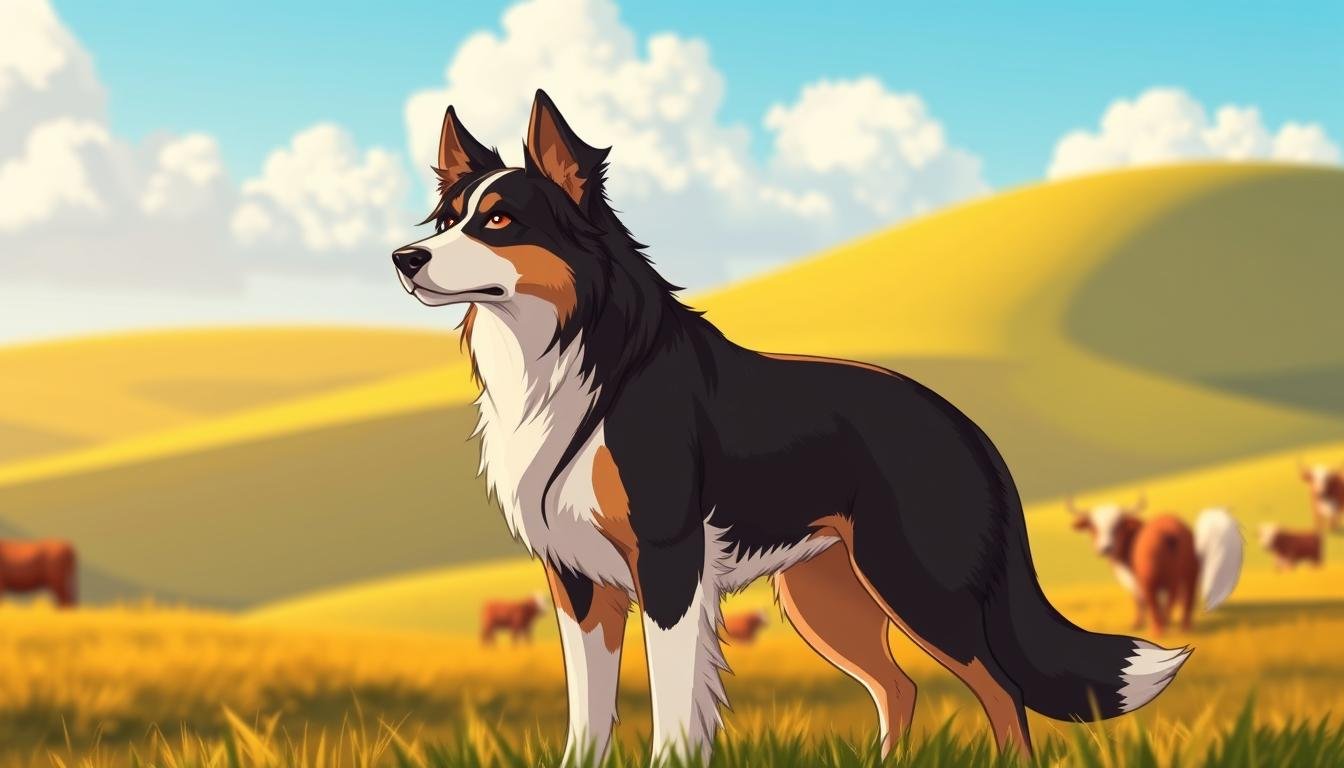Many pet owners often wonder if it’s safe to share certain human foods with their furry companions. One common question is whether pork bones are a suitable treat. While it might seem natural to offer leftovers, there are significant risks to consider.
Pork and its byproducts can pose health hazards if not handled properly. Cooked bones, in particular, are more likely to splinter, leading to choking or internal injuries. Raw bones, while less prone to splintering, carry their own set of risks, including bacterial contamination.
This article will explore the nutritional aspects, potential dangers, and safe practices for feeding pork bones to your pet. We’ll also compare raw and cooked options to help you make informed decisions. Always consult your veterinarian to ensure your pet’s diet supports their overall health.
Key Takeaways
- Cooked bones are more likely to splinter and cause harm.
- Raw bones may carry bacteria like Salmonella.
- Consult your vet before introducing any new foods.
- Monitor your pet closely when giving bones.
- Consider safer alternatives for dental health.
Understanding Pork Bones in a Canine Diet
Understanding the role of pork bones in a pet’s diet requires a closer look at their nutritional and dental benefits. These natural ingredients can provide essential nutrients while promoting oral hygiene. However, it’s crucial to weigh the advantages against potential risks.
Nutritional Value of Pork and Bones
Pork is a rich source of protein and essential fats, making it a valuable addition to a pet’s diet. The meat contains vital nutrients like zinc, iron, and B vitamins, which support overall health. Bones, on the other hand, are packed with minerals such as calcium and phosphorus, which are essential for strong bones and teeth.
Raw pork, in particular, retains more of its natural enzymes and nutrients compared to cooked versions. This makes it a healthier option for pets, provided it is handled safely. However, always ensure the meat is fresh and free from harmful bacteria.
The Role of Bones in Dental Health
Chewing on bones can significantly improve a pet’s oral health. The act of gnawing helps remove plaque and tartar buildup, reducing the risk of gum disease. Additionally, chewing stimulates saliva production, which naturally cleans the teeth and neutralizes harmful bacteria.
Raw bones are especially effective for this purpose, as they are softer and less likely to splinter. However, it’s important to choose the right size and type of bone to prevent choking or dental damage. Always supervise your pet during chewing sessions to ensure safety.
| Nutrient | Benefit |
|---|---|
| Protein | Supports muscle growth and repair |
| Calcium | Strengthens bones and teeth |
| Phosphorus | Aids in bone development |
| Zinc | Boosts immune function |
Incorporating pork bones into a pet’s diet can offer both nutritional and dental benefits. However, it’s essential to prioritize safety and consult a veterinarian before making any dietary changes.
Can Dogs Eat Pork Bones? What You Need to Know
Deciding what to feed your pet involves understanding both benefits and risks. While pork bones might seem like a natural treat, their safety depends on several factors. Proper preparation and supervision are key to minimizing potential hazards.
When They Can Be Safe
Under specific conditions, pork bones might be considered safe for pets. Raw bones are generally less likely to splinter compared to cooked ones. However, size and preparation play a critical role in ensuring safety.
For example, smoked bones are often softer and less prone to breaking. Smaller bones, like pork rib bones, are easier to chew and digest. Always monitor your pet closely during chewing sessions to prevent choking or injuries.
“Even with precautions, individual pet health must be considered. Not all animals can handle bones, especially those with sensitive stomachs or dental issues.”
Consulting Your Veterinarian
Before introducing pork bones into your pet’s diet, consult your veterinarian. They can provide personalized recommendations based on your pet’s age, size, and health condition. Professional advice ensures that any dietary changes support your pet’s overall well-being.
Remember, what works for one pet might not be suitable for another. A vet can also guide you on safer alternatives if pork bones pose too much risk. Prioritizing your pet’s health is always the best approach.
Risks and Dangers of Pork Bones
Feeding certain foods to pets can come with hidden dangers that owners may not anticipate. While pork bones might seem like a natural treat, they can pose serious health risks. Understanding these hazards is crucial to keeping your pet safe.
Choking and Splintering Hazards
One of the most immediate risks is choking. Small bone fragments can easily lodge in the windpipe, blocking airflow. Cooked bones are particularly dangerous as they become brittle and splinter easily.
Sharp fragments can cause injuries to the mouth, throat, or intestines. These injuries can lead to severe pain and even life-threatening conditions. Always supervise your pet during chewing sessions to minimize these risks.
Potential for Intestinal Blockages
Swallowed bone pieces can cause intestinal blockages, a serious problem that often requires surgery. Symptoms like vomiting, drooling, or lack of appetite may indicate a blockage. Immediate veterinary care is essential in such cases.
Bacterial contamination, such as salmonella, is another concern. Raw bones carry a higher risk of harmful bacteria, which can lead to infections. Always handle raw bones with care and ensure they are fresh.
“Even with precautions, individual pet health must be considered. Not all animals can handle bones, especially those with sensitive stomachs or dental issues.”
To reduce risks, choose larger bones that are less likely to splinter. Monitor your pet closely and remove the bone if it starts to break apart. Prioritizing safety ensures your pet enjoys their treat without harm.
Raw vs. Cooked: Choosing the Right Pork Bone

Selecting the right type of bone for your pet requires careful consideration. Both raw and cooked options have their pros and cons. Understanding these differences helps ensure your pet’s safety and health.
Benefits and Risks of Raw Bones
Raw pork bones are softer and less likely to splinter compared to cooked ones. This makes them a safer option for chewing. They also retain more natural nutrients, which can benefit your pet’s diet.
However, raw bones come with risks. They can harbor harmful bacteria like Salmonella or E. coli. Proper handling and storage are essential to minimize these dangers. Always ensure the bone is fresh and sourced from a trusted supplier.
Why Cooked Bones Are Risky
Cooked pork bones become brittle and are more prone to splintering. Sharp fragments can cause injuries to the mouth, throat, or intestines. This increases the risk of choking or internal damage.
Smoked bones may seem like an alternative, but they still carry risks. Supervision is crucial when offering any type of bone to your pet. Monitoring their chewing habits helps prevent accidents.
“Even with precautions, individual pet health must be considered. Not all animals can handle bones, especially those with sensitive stomachs or dental issues.”
Choosing between raw and cooked bones depends on your pet’s needs and health. Always consult your veterinarian before introducing new treats. Prioritizing safety ensures your pet enjoys their treat without harm.
Safe Feeding Practices and Tips for Dog Owners
Ensuring your pet’s safety during mealtime involves more than just choosing the right food. Proper feeding practices are essential to prevent health risks and ensure your furry friend enjoys their meals safely. Below, we’ll explore key tips to help you create a safe feeding routine.
Proper Bone Size Selection
Choosing the right size bone is crucial for your pet’s safety. Larger breeds should be given bigger bones to prevent them from breaking smaller pieces. Smaller bones can easily splinter, increasing the risk of choking or injury.
Always match the bone size to your pet’s breed and chewing habits. A bone that’s too small can be swallowed whole, while one that’s too large may cause dental damage. Consulting your veterinarian can help you make the best choice.
Supervision and Bone Rotation
Supervision is key when your pet is chewing on bones. Always monitor them to ensure they’re not swallowing large pieces or showing signs of discomfort. If you notice any issues, remove the bone immediately.
Rotating bones can also prevent boredom and reduce dental risks. Offering different types of bones keeps your pet engaged while minimizing wear on their teeth. Limit chewing sessions to 10-15 minutes at a time to avoid overuse.
| Practice | Benefit |
|---|---|
| Choose the right size | Prevents choking and injuries |
| Supervise chewing | Ensures immediate intervention if needed |
| Rotate bones | Reduces boredom and dental wear |
| Limit chewing time | Prevents excessive wear and tear |
By following these tips, you can create a safe and enjoyable feeding routine for your pet. Prioritizing their health ensures they stay happy and healthy for years to come.
Choosing Quality Pork Bones: Pastured vs. Factory-Farmed

The quality of pork bones significantly impacts their safety and nutritional value for pets. Sourcing matters, as pastured and factory-farmed options differ greatly in terms of health benefits and risks. Understanding these differences helps pet owners make informed decisions.
Nutritional Benefits of Pastured Pork
Pastured pork bones come from animals raised in natural environments, allowing them to forage and root freely. This lifestyle results in higher levels of omega-3 fatty acids, which support heart health and reduce inflammation. Pastured pork also contains enriched minerals like calcium and phosphorus, essential for strong bones and teeth.
Studies show that pastured pork has up to 291% more omega-3s compared to factory-farmed options. This makes it a healthier choice for pets, promoting overall well-being. Additionally, pastured animals are free from antibiotics and harmful chemicals, ensuring a cleaner product.
Risks of Factory-Farmed Pork
Factory-farmed pork bones often come from animals raised in confined spaces with limited access to natural behaviors. These conditions lead to higher levels of omega-6 fatty acids, which can cause inflammation when consumed in excess. The use of antibiotics and chemical dewormers further compromises the quality of the meat.
Factory-farmed pork is also more likely to contain harmful additives and preservatives. These substances can negatively impact a pet’s health, leading to digestive issues or allergic reactions. Choosing pastured pork reduces these risks and ensures a safer treat for your furry friend.
“The nutritional differences between pastured and factory-farmed meat indicate a significant variation in health benefits for both pets and humans.”
How to Identify Quality Pork Bones
Pet owners should look for labels like Certified Humane or USDA Organic when selecting pork bones. These certifications ensure the animals were raised in humane conditions and fed organic diets. Avoid products with artificial additives or unclear sourcing information.
By prioritizing quality, pet owners can provide their pets with nutritious and safe treats. Always consult your veterinarian to ensure the chosen bones align with your pet’s dietary needs.
Alternative Treats and Additional Dog Food Safety Tips
Exploring safer alternatives to traditional treats can ensure your pet’s health and happiness. While bones might seem like a natural choice, there are many other options that provide similar benefits without the risks. These alternatives can support dental health, improve digestion, and offer essential nutrients.
Exploring Non-Bone Treat Options
Non-bone treats are a great way to keep your pet engaged and healthy. Chew toys made from durable rubber or nylon can help clean teeth and reduce plaque. Dental chews, specifically designed for oral hygiene, are another excellent choice. They often contain enzymes that fight bacteria and freshen breath.
For nutritional benefits, consider treats made from lean meats or vegetables. Sweet potatoes, carrots, and pumpkin are rich in vitamins and fiber. These options are easy to digest and support overall well-being. Always choose products that are free from artificial additives or preservatives.
“The right treat can make a significant difference in your pet’s health. Opt for options that are both safe and nutritious.”
Practical Tips for Safe Treats
When selecting treats, always check the ingredients list. Avoid products with high sodium or sugar content. Look for certifications like USDA Organic or Certified Humane to ensure quality. Introduce new treats gradually to monitor for any allergic reactions.
Rotating treats can prevent boredom and ensure a balanced diet. Limit treat intake to 10% of your pet’s daily caloric intake to avoid weight gain. Consulting your veterinarian can help you choose the best options for your pet’s specific needs.
| Treat Type | Benefits |
|---|---|
| Chew Toys | Promote dental health and reduce boredom |
| Dental Chews | Fight bacteria and freshen breath |
| Vegetables | Provide vitamins and fiber |
| Lean Meats | Offer high-quality protein |
By choosing the right treats, you can ensure your pet stays healthy and happy. Always prioritize safety and consult your veterinarian for personalized recommendations.
Conclusion
Making informed decisions about your pet’s diet ensures their safety and well-being. While certain treats might seem appealing, understanding the risks is crucial. Always make sure to consult your veterinarian before introducing new items into their meals.
Raw and cooked options each have their pros and cons. Raw choices are softer but may carry bacteria, while cooked ones can splinter easily. The reason for caution is clear: both types pose potential hazards if not handled properly.
For a safer way to support dental health, consider alternatives like chew toys or dental treats. These options provide similar benefits without the risks. Keep an eye on your pet’s reactions and monitor for any signs of discomfort.
Ultimately, the best approach is to prioritize quality and safety. By staying informed and consulting a professional, you can ensure your furry friend stays healthy and happy.




